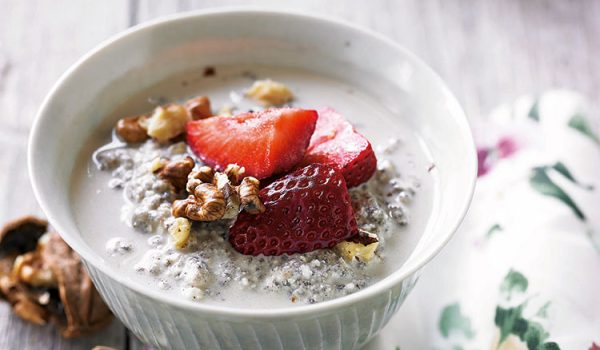Want a simple recipe for green matcha latte and green matcha tea? Well, here you go
Firstly, matcha literally means “powdered tea.” When you order traditional green tea, components from the leaves get infused into the hot water, then the leaves are discarded. With matcha, you’re drinking the actual leaves, which have been finely powdered and made into a solution, traditionally by mixing about a teaspoon of matcha powder with a third cup of hot water (heated to less than a boil), which is then whisked with a bamboo brush until it froths.
So effectively, matcha is made from high quality tea and that’s why it has so many real health benefits.
- May Help Prevent Cancer
- Promotes Weight Loss
- Benefits Exercise Performance
- Best Food Source of Disease-Fighting Catechins
- High Levels of L-Theanine for an Alert Calm
- Reduces Heart Disease Risk and Hypertension
- Lowers Type II Diabetes Risk
- Detoxifies the Body
How To Make Matcha Latte
Like coffee, matcha contains caffeine, but instead of the jitters it gives you a clean high. A matcha hit provides 34mg of caffeine, which is the same as a cup of brewed coffee and half the amount of an espresso, however, the tea’s buzz is much more energising and longer-lasting.
Here’s how to make it:
Spoon the matcha green tea powder and the sugar into a mug or cup. Add the warm water and mix with a spoon or with a whisk until it is a smooth dark green paste to ensure no lumps form. Warm the milk in a small saucepan and pour into the mug until nearly full. Use cold milk for an iced latte.
How To Make Matcha Green Tea
Bring 3/4 cup unsweetened almond milk, soy milk, rice milk, or cow’s milk to a bare simmer in a small pot over medium-high heat. Place 1 teaspoon matcha powder in a heatproof cup. Slowly whisk in 1/4 cup boiling water, then almond milk, tipping cup slightly to help create more foam. Sweeten with agave syrup.







